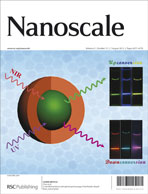First-principles prediction of charge mobility in carbon and organic nanomaterials
Abstract
We summarize our recent progresses in developing first-principles methods for predicting the intrinsic charge mobility in carbon and organic nanomaterials, within the framework of Boltzmann transport theory and relaxation time approximation. The electron–phonon couplings are described by Bardeen and Shockley's deformation potential theory, namely delocalized electrons scattered by longitudinal acoustic phonons as modeled by uniform lattice dilation. We have applied such methodology to calculating the charge carrier mobilities of


 Please wait while we load your content...
Please wait while we load your content...